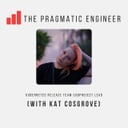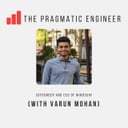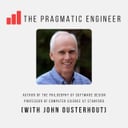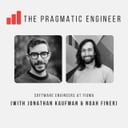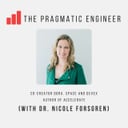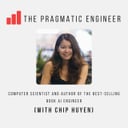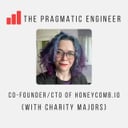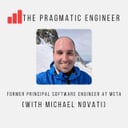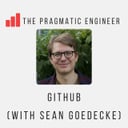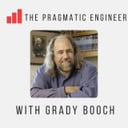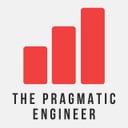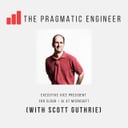
50 Years of Microsoft and Developer Tools with Scott Guthrie
How has Microsoft changed since its founding in 1975, especially in how it builds tools for developers?In this episode of The Pragmatic Engineer, I sit down with Scott Guthrie, Executive Vice President of Cloud and AI at Microsoft. Scott has been with the company for 28 years. He built the first prototype of ASP.NET, led the Windows Phone team, led up Azure, and helped shape many of Microsoft’s most important developer platforms.We talk about Microsoft’s journey from building early dev tools to becoming a top cloud provider—and how it actively worked to win back and grow its developer base.In this episode, we cover:• Microsoft’s early years building developer tools • Why Visual Basic faced resistance from devs back in the day: even though it simplified development at the time• How .NET helped bring a new generation of server-side developers into Microsoft’s ecosystem• Why Windows Phone didn’t succeed • The 90s Microsoft dev stack: docs, debuggers, and more• How Microsoft Azure went from being the cloud provider to the spot today• Why Microsoft created VS Code• How VS Code and open source led to the acquisition of GitHub• What Scott’s excited about in the future of developer tools and AI• And much more!—Brought to you by:• Statsig — The unified platform for flags, analytics, experiments, and more.• Sinch — Connect with customers at every step of their journey.• Modal — The cloud platform for building AI applications.—The Pragmatic Engineer deepdives relevant for this episode:• Microsoft is dogfooding AI dev tools’ future• Microsoft’s developer tools roots• Why are Cloud Development Environments spiking in popularity, now?• Engineering career paths at Big Tech and scaleups• How Linux is built with Greg Kroah-Hartman—Where to find Scott Guthrie:• X: LinkedIn: this episode, we cover:(00:00) Intro(02:25) Microsoft’s early years building developer tools(06:15) How Microsoft’s developer tools helped Windows succeed(08:00) Microsoft’s first tools were built to a...

50 Years of Microsoft and Developer Tools with Scott Guthrie
How has Microsoft changed since its founding in 1975, especially in how it builds tools for developers?In this episode of The Pragmatic Engineer, I sit down with Scott Guthrie, Executive Vice President of Cloud and AI at Microsoft. Scott has been with the company for 28 years. He built the first prototype of ASP.NET, led the Windows Phone team, led up Azure, and helped shape many of Microsoft’s most important developer platforms.We talk about Microsoft’s journey from building early dev tools to becoming a top cloud provider—and how it actively worked to win back and grow its developer base.In this episode, we cover:• Microsoft’s early years building developer tools • Why Visual Basic faced resistance from devs back in the day: even though it simplified development at the time• How .NET helped bring a new generation of server-side developers into Microsoft’s ecosystem• Why Windows Phone didn’t succeed • The 90s Microsoft dev stack: docs, debuggers, and more• How Microsoft Azure went from being the cloud provider to the spot today• Why Microsoft created VS Code• How VS Code and open source led to the acquisition of GitHub• What Scott’s excited about in the future of developer tools and AI• And much more!—Brought to you by:• Statsig — The unified platform for flags, analytics, experiments, and more.• Sinch — Connect with customers at every step of their journey.• Modal — The cloud platform for building AI applications.—The Pragmatic Engineer deepdives relevant for this episode:• Microsoft is dogfooding AI dev tools’ future• Microsoft’s developer tools roots• Why are Cloud Development Environments spiking in popularity, now?• Engineering career paths at Big Tech and scaleups• How Linux is built with Greg Kroah-Hartman—Where to find Scott Guthrie:• X: LinkedIn: this episode, we cover:(00:00) Intro(02:25) Microsoft’s early years building developer tools(06:15) How Microsoft’s developer tools helped Windows succeed(08:00) Microsoft’s first tools were built to a...


